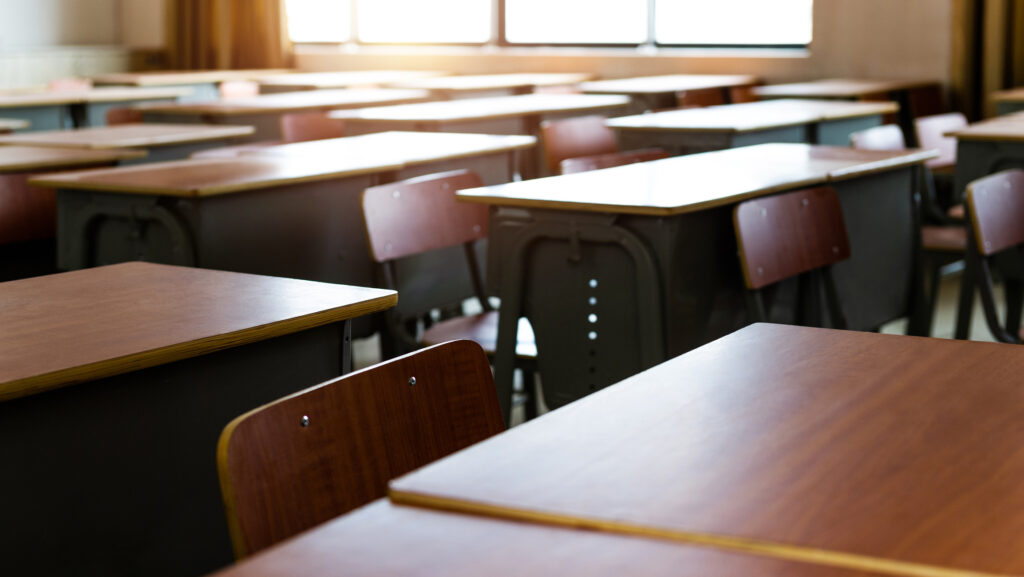Georgia lawmakers are considering overturning a classroom technology ban to let K-12 students bring their own devices to class.
If adopted in House Bill 706, the Bring-Your-Own-Technology (BYOT) provision would allow students to bring personal laptops, tablets, and smartphones into their classrooms, potentially saving the state money and expanding students’ access to technology in school.
Some teachers and parents raised concerns about cheating, theft, and distractions such as Facebook and instant messaging, but proponents of the policy argue kids are already sneaking technology into schools anyway.
“You’re already BYOT but you won’t admit it,” Forsyth County Director of Instructional Technology Jill Hobson told a group of superintendents.
Today’s students are used to the addicting stimulation of technology, which can make the traditional tech-free classroom seem dull in comparison. So it’s no wonder many pull out their unauthorized digital devices in class. Proponents argue BYOT would harness those devices for learning.
Reducing Technology Costs
In 2010 the Georgia Department of Education spent $126.3 million on technology, and school districts spent $145 million. Some of these purchases included standard classroom equipment, such as projectors and teachers’ computers, but others included tablet, laptop, and desktop computers for students. Classrooms currently have one computer for every three students, and 2010 replacement costs for broken or outdated devices totaled $32 million, according to the GDOE.
Under BYOT, students who opt in would bring the personal devices they already own and take responsibility for their own device costs and maintenance.
“Districts like the concept of BYOT because it can reduce the cost of providing every student with a computing device, which can be a barrier to giving students the opportunity to use 21st century skills during their school day,” said Georgia’s associate superintendent for instructional technology, Kathy Platt.
Privacy, Legal Concerns
Platt also noted key concerns. Some school administrators worry about installing Internet filters strong enough to prevent students from accessing explicit content at school and violating the Children’s Internet Protection Act (CIPA). And although 99 percent of Georgia schools have wireless Internet access, the added traffic might bog down their network because they don’t have enough bandwidth for so many devices.
Others worry about device theft or that Internet may prove distracting. In addition, they caution, students too poor to own their own gadgets might not get the same learning opportunities as those who do.
Some incidents do show improperly implemented technology can be disastrous in schools. In 2007, Liverpool High in New York began to phase out its school-issued laptop program because students had used the school network to instant-message test answers, download pornography, and hack local websites. A tenth-grader circumvented the filter that the school attempted to install on its network, and teachers struggled to keep their students’ attention in class.
After seven years of the program, the New York Times reported teachers saw no improvement in student learning.
Responsible Technology Use
Successfully implementing classroom technology requires teachers to create a culture of responsible technology use, said Tom Vander Ark, chair of the International Association for K-12 Online Learning.
He cited Forsyth County, Georgia, which received a waiver of the state’s law to allow Forsyth teachers to harness student devices for learning. During certain times such as tests or discussions, teachers require students to shut their laptops and set their smartphones face-down.
“Teachers need to have a plan” for implementing high-quality digital materials that align with state standards and keep students engaged, Vander Ark said. “The exciting thing is that there is an explosion in digital content, both proprietary and open.”
Digital learning tools have vast untapped potential. Teachers can amass content from different web sources into a single lesson. Instead of assigning students 20 problems from the back of an algebra book and then manually grading them, teachers can organize a custom selection of automatically graded math learning games students can complete online at home.
“It’s time to acknowledge technology is coming to school,” Vander Ark said. “Instead of banning technology devices, such as cell phones, . . . we need to make use of them.”
Image by Caroline Dreams.




